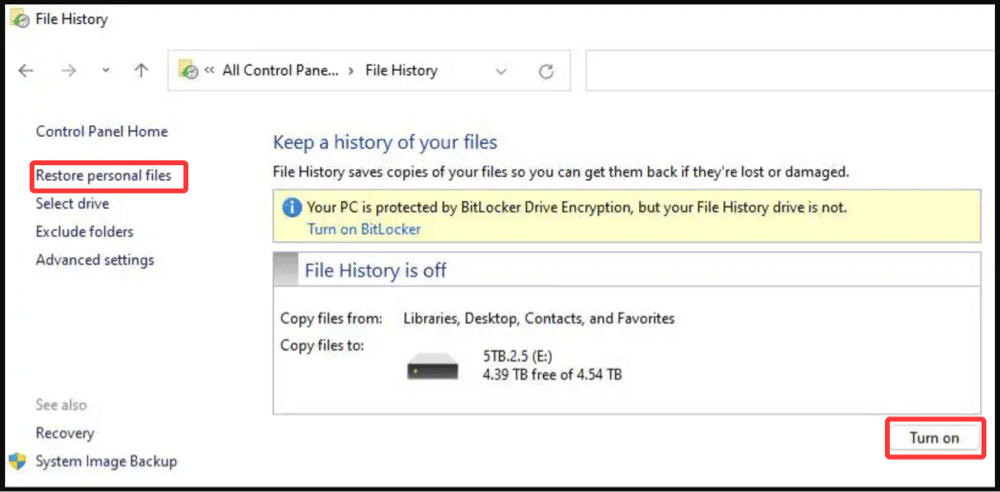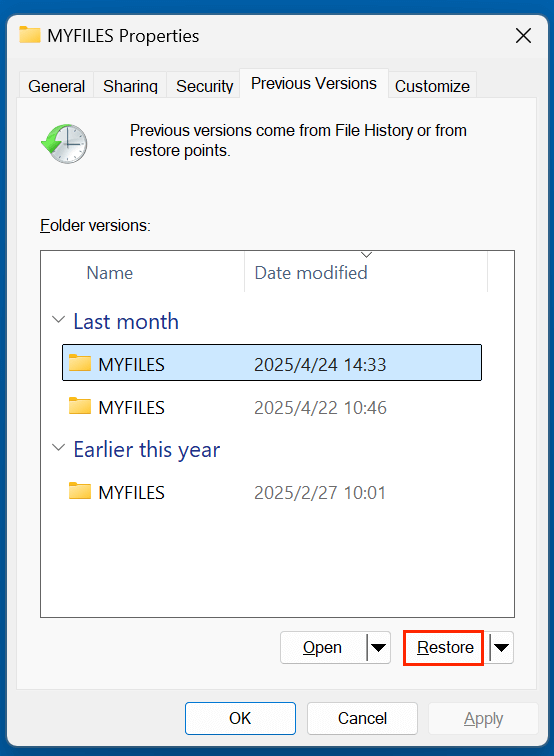Before we start: Donemax Data Recovery is one of the best NTFS data recovery software. It is fully compatible with Windows and macOS and it can recover deleted, formatted or lost data from any NTFS drive on PC or Mac. This data recovery software even can export data from inaccessible NTFS drives and repair damaged NTFS drives without losing data.
PAGE CONTENT:
In today's digital world, NTFS drives are widely used for storing essential files, including documents, photos, videos, and more. But despite their reliability, NTFS drives are not immune to data loss. Whether it's accidental deletion, formatting, system crashes, or hardware failures, losing data from an NTFS drive can be frustrating and costly.
The good news is that data recovery from NTFS drives is often possible, provided the right steps are taken quickly. This article explores everything you need to know about NTFS drive data recovery, from understanding how NTFS works to using trusted tools and techniques to restore lost files.

Understand the NTFS File System
Modern Windows operating systems, such as Windows 11, 10, 8, 7, and even Windows Server versions, employ NTFS as their default file system. Developed by Microsoft, NTFS offers several advantages over older file systems like FAT32 and exFAT, such as:
- Support for large files and partitions
- File-level security with encryption and permissions
- Data integrity through journaling and error correction
- Efficient disk space utilization
- Resilience against crashes and unexpected shutdowns
NTFS is commonly found on internal HDDs, SSDs, and external storage devices used with Windows PCs.
While NTFS is robust, it's not foolproof. Data loss can still occur due to various reasons, making NTFS drive data recovery an essential skill for both home users and professionals.
Common Causes of Data Loss on NTFS Drives
Prior exploring the recovery methods, it is beneficial to understand the typical scenarios that lead to data loss on NTFS drives:
1. Accidental File Deletion
Mistakenly deleting files using Shift + Delete or emptying the Recycle Bin removes them from easy recovery, but they may still reside on the drive until overwritten.
2. Formatting the NTFS Drive
Formatting erases the file system's directory structure, making files invisible to the operating system. However, data often remains recoverable until new files overwrite the sectors.
3. File System Corruption or RAW Drive Issues
A corrupted NTFS file system can turn your drive RAW, making it unreadable. This often results from improper shutdowns, virus attacks, or disk errors.
4. Virus or Malware Infections
Malicious software can delete, encrypt, or corrupt files, leaving your NTFS drive damaged or inaccessible.
5. Hardware Failures or Bad Sectors
Physical damage to the drive, bad sectors, or wear and tear can lead to partial or complete data loss.
6. Power Failures or System Crashes
Sudden shutdowns during read/write operations may corrupt files or damage the file system.
7. Partition Table Damage
Losing or corrupting the partition table can render your NTFS partitions invisible or unbootable.
Is NTFS Drive Data Recovery Possible?
Yes, in most cases, data recovery from an NTFS drive is possible. However, several factors influence the success rate:
- Extent of data overwriting: Once deleted files are overwritten by new data, recovery chances decrease significantly.
- Type of damage: Logical damage (like accidental deletion or formatting) is easier to recover from compared to physical damage.
- Time factor: Acting quickly increases the likelihood of successful recovery.
If your NTFS drive has suffered minor corruption, accidental deletion, or formatting, you have a high chance of restoring your data using software tools. For hardware-related issues, professional recovery services may be necessary.
Preparing for NTFS Drive Data Recovery
To maximize your chances of successful data recovery:
- To avoid overwriting, immediately stop using the NTFS drive.
- If it's an external drive, disconnect it safely.
- Avoid reformatting, initializing, or repairing the drive with unfamiliar tools.
- Choose a reliable data recovery solution to proceed.
3 Methods to Recover Data from NTFS Drives
Let's explore proven techniques to recover data from NTFS drives, starting with user-friendly software and moving to more advanced options.
Method 1. Recover NTFS Data Using Data Recovery Software
Data recovery software is one of the most effective solutions for retrieving lost, deleted, or formatted files from an NTFS drive, provided the drive isn't physically damaged. These tools use advanced scanning algorithms to locate lost data, even when the file system appears corrupted or the files have been removed from the Recycle Bin.
Donemax Data Recovery is such a NTFS recovery tool. It supports NTFS, exFAT, FAT32, HFS+, APFS, ReFS, etc. With this data recovery tool, you can recover lost data from NTFS drives on both Windows and macOS.
Step-by-Step Guide: Recover NTFS Drive Data Using Software
Step 1: Download and install a trusted data recovery tool - such as Donemax Data Recovery on a different drive (avoid installing on the affected NTFS drive).
Step 2: Launch the software and select the affected NTFS drive from the list of available disks.
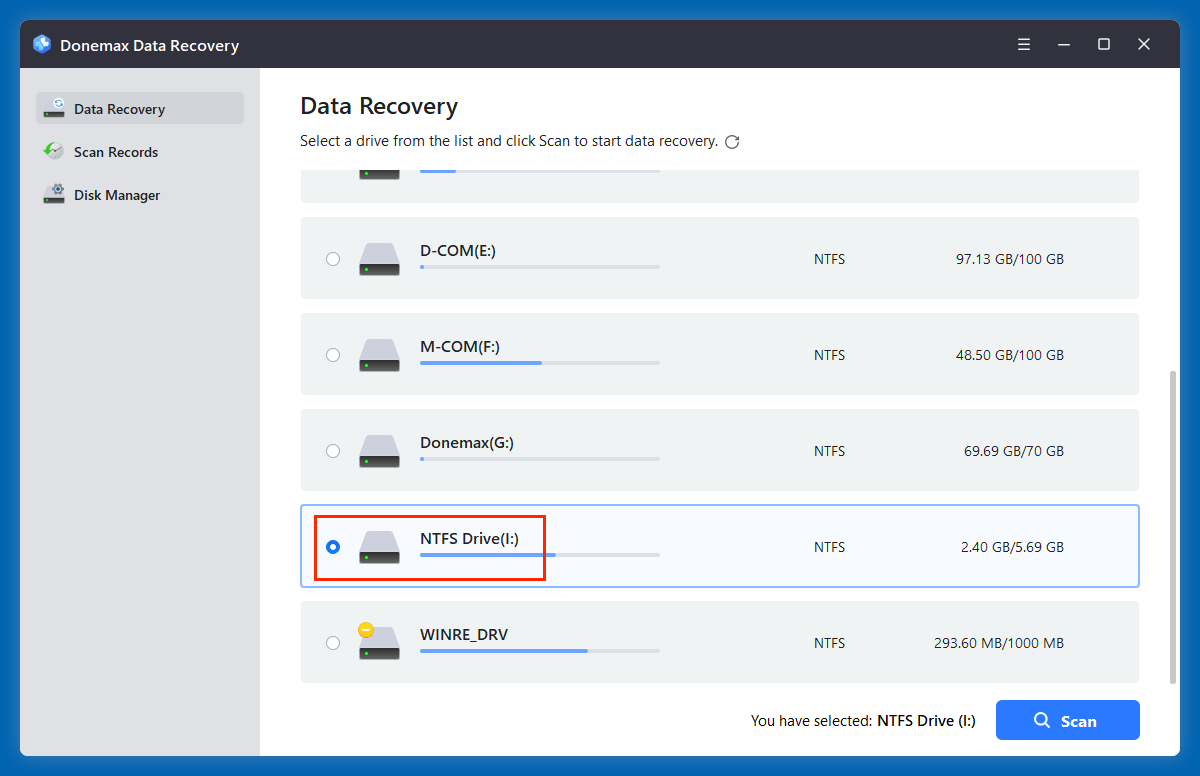
Step 3: Click on Scan button to start a deep scan to search for lost files. This may take time, depending on the drive's size and condition.
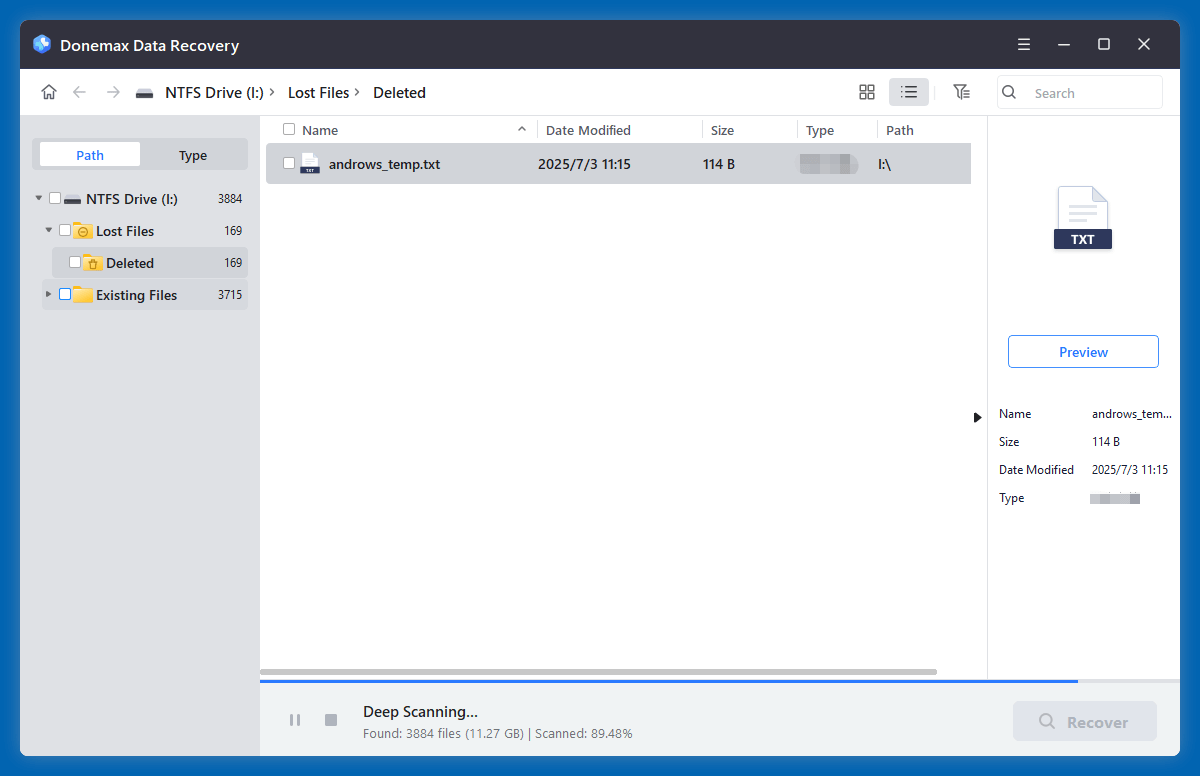
Step 4: Preview recoverable files (photos, documents, videos, etc.) to ensure integrity. Then select the wanted files, click on Recover button to save them.
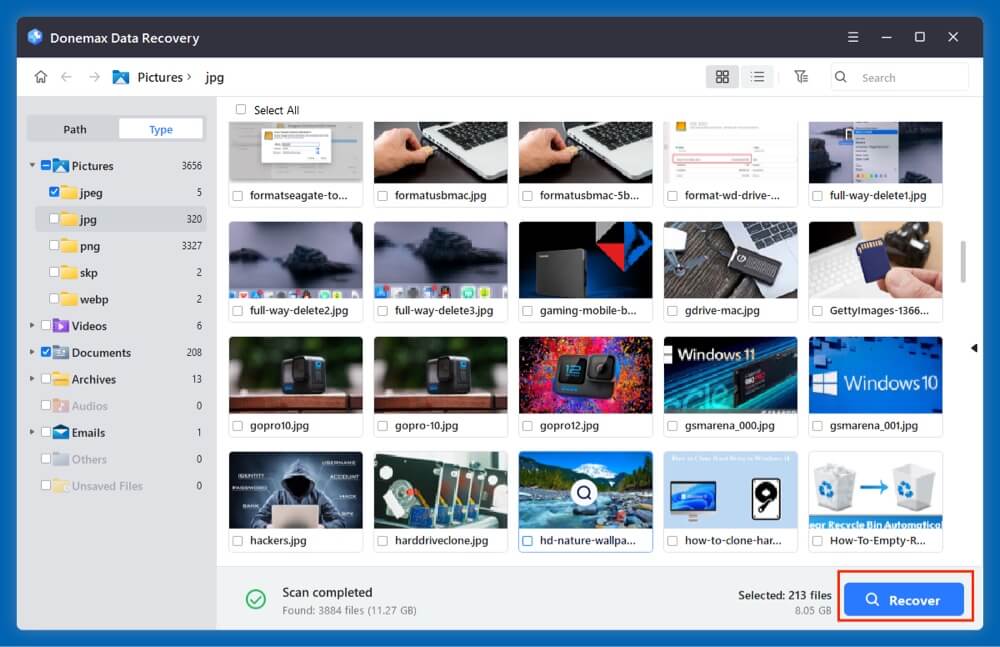
To prevent overwriting, choose the files you wish to recover and save them to an alternate storage device.
Advantages
- User-friendly with step-by-step instructions
- Supports multiple file types and recovery scenarios
- Preview option before recovery
Disadvantages
- Full features may require paid versions
- Deep scans can take significant time for large drives
Method 2. Use Windows Built-in Tools for NTFS Recovery
For minor issues, Windows offers basic utilities to attempt file recovery:
- File History: You can restore earlier iterations of files or directories if enabled.
![NTFS drive data recovery]()
- Previous Versions: Right-click a folder, select Properties > Previous Versions, and restore from available backups.
![NTFS drive data recovery]()
- CHKDSK Utility: Run chkdsk X: /f /r (replace X with your drive letter) in Command Prompt to fix minor file system errors.
![NTFS drive data recovery]()
- ATTRIB Command: Useful for recovering hidden or system files removed by viruses.
![NTFS drive data recovery]()
These methods work for minor corruption but are not suitable for formatted drives or severe data loss.
Method 3. Professional Data Recovery Services
If your NTFS drive suffers physical damage, severe corruption, or you cannot afford the risk of DIY recovery, consider professional data recovery services.
When to Seek Expert Help:
- Clicking, grinding, or unusual noises from the drive
- The drive is undetectable by the system
- Failed attempts with recovery software
- Critical business or irreplaceable personal data
Process:
Experts use cleanroom environments and advanced tools to extract data from damaged drives. While this service is expensive, it offers the highest chance of recovery for severe cases.
NTFS Partition Recovery Tips
Sometimes, entire NTFS partitions get lost or deleted. In such cases:
- Use partition recovery tools like Donemax Data Recovery, EaseUS Partition Recovery, or TestDisk
- Recover the partition table and file system structure
- Avoid initializing the disk when prompted by Windows
Partition recovery is different from file recovery and requires careful handling to prevent further damage.
Prevent Data Loss on NTFS Drives
While recovery is possible, prevention is always better. Follow these best practices:
1. Regular Backups
- Use external hard drives, cloud storage, or backup software
- Automate backups for critical files
2. Safe Removal Practices
- Always eject external drives properly
- Avoid unplugging drives during file transfers
3. System Protection
- Use surge protectors or UPS to prevent power-related damage
- Keep your antivirus software updated
- Regularly scan for malware and vulnerabilities
4. Monitor Drive Health
- Use tools like CrystalDiskInfo or SMART monitoring utilities
- Address early warnings like bad sectors or unusual noises
Taking proactive measures significantly reduces the risk of data loss on NTFS drives.
FAQs About NTFS Drive Data Recovery
1. How to recover permanently deleted files from a NTFS drive?
You can use data recovery software - such as Donemax Data Recovery to help recover permanently deleted files from a NTFS drive on Windows or macOS:
- Download and install Donemax Data Recovery.
- Open Donemax Data Recovery and select the NTFS drive.
- Click on Scan button.
- Preview and recover lost files after scanning.
2. Can I recover files after formatting an NTFS drive?
Yes, provided new data hasn't overwritten the old sectors, recovery tools can retrieve formatted files.
Donemax Data Recovery can recover lost data from a formatted NTFS drive on Windows and macOS.
3. How long does NTFS data recovery take?
The duration depends on the drive's size, health, and the extent of data loss. Deep scans may take hours.
4. Are free NTFS recovery tools reliable?
Basic recovery is possible with free tools like Donemax Data Recovery or Recuva, but paid software offers better results and features.
Here is the lost of top data recovery software for NTFS file recovery.
🔹 Donemax Data Recovery
- User-friendly interface suitable for beginners
- Supports recovery from accidental deletion, formatting, RAW drives, and partition loss
- Offers file preview before recovery
- Available for both Windows and Mac
🔹 Magoshare Data Recovery
- Powerful scanning technology with Deep and Quick Scan modes
- Supports over 400 file formats
- Includes additional tools like data protection and disk health monitoring
🔹 Stellar Data Recovery
- High success rate in recovering documents, photos, videos, and emails
- Supports formatted, corrupted, or inaccessible NTFS drives
- Offers advanced filters and file preview options
🔹 Recuva (Free & Paid Versions)
- Basic yet effective tool for recovering deleted files
- Ideal for recovering recently deleted files from NTFS drives
- Less effective for formatted drives or complex recovery scenarios
5. Is data recovery possible from a corrupted NTFS drive?
Yes, as long as the physical drive is intact, corrupted file systems can often be repaired or bypassed for data recovery.
6. What's the difference between Quick Scan and Deep Scan?
Quick Scan searches recently deleted files, while Deep Scan thoroughly analyzes the entire drive for recoverable data.
Conclusion
Losing data from an NTFS drive can feel overwhelming, but recovery is often achievable with the right tools and approach. Whether it's accidental deletion, formatting, or corruption, acting quickly and using reliable NTFS data recovery software (such as Donemax Data Recovery) can restore your valuable files.
For severe physical damage, professional services are the safest option. And to avoid future headaches, always back up your important data and handle your drives with care.
By following these steps, you can navigate NTFS drive data loss with confidence and minimize the risk of permanent file loss.


Donemax Data Recovery
One of the best data recovery programs to recover deleted, formatted or lost data from PC, Mac, HDD, SSD, USB drive, SD card, camera, RAID, Sever or other storage devices..
Related Articles
- Apr 18, 2025How to Unformat HDD: Complete Guide to Recover Formatted Hard Drive Data
- Jan 15, 2024How to Recover Lost Data from Crucial SSD?
- Apr 25, 2025[4 Methods] Recover Lost WAV Audio File: A Complete Guide
- May 22, 20252025 Best Free Data Recovery Tools and Methods
- Jul 04, 2024Best 4 Samsung Data Recovery Software
- Oct 28, 2024How to Recover Lost MKV Videos – A Comprehensive Guide

Charles
Charles, who lives in Sydney, Australia, is an editor & writer of Donemax Team. He is good at writing articles related with Apple Mac computers, Windows operating systems, data recovery, data erasure, disk clone and data backup, etc. He loves reading and playing tennis in his spare time and is interested in testing new digital devices such as mobile phones, Macs, HDDs, SSDs, digital cameras, etc.

Gerhard Chou
In order to effectively solve the problems for our customers, every article and troubleshooting solution published on our website has been strictly tested and practiced. Our editors love researching and using computers and testing software, and are willing to help computer users with their problems
